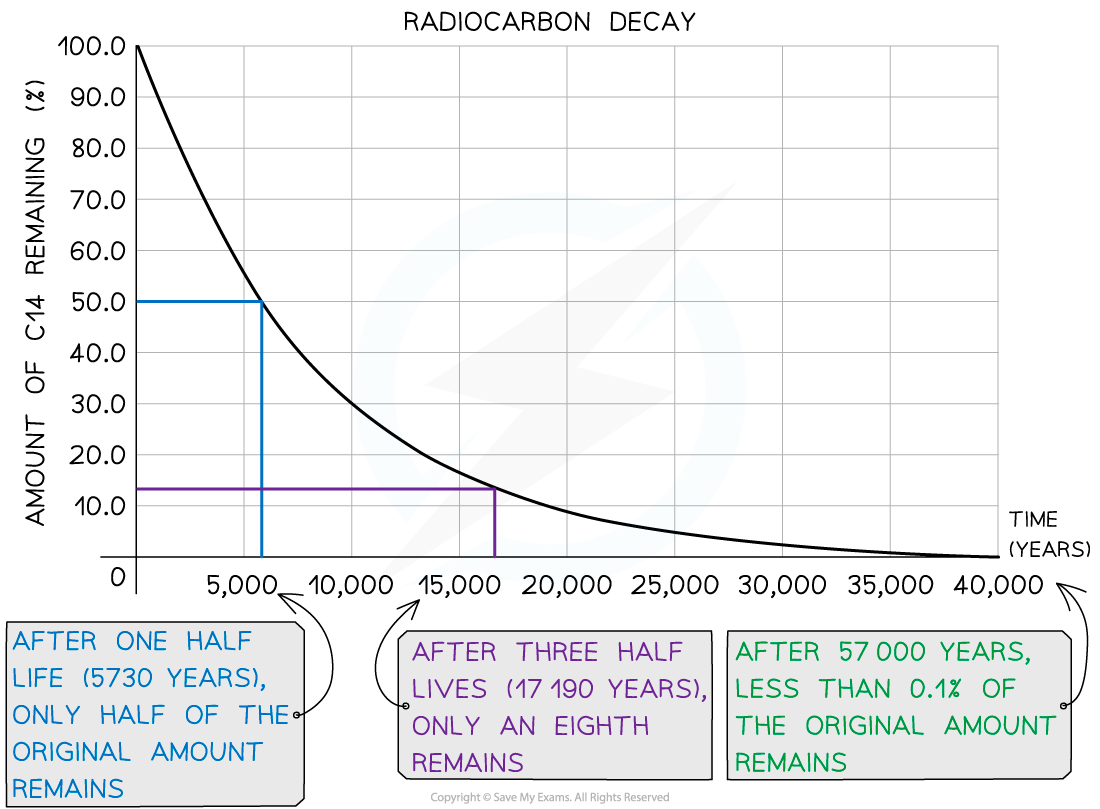Radioactive Dating (OCR A Level Physics): Revision Note
Exam code: H556
Radioactive Dating
The isotope carbon-14 is commonly used in radioactive dating
It forms as a result of cosmic rays knocking out neutrons from nuclei, which then collide with nitrogen nuclei in the air:
1n + 14N → 14C + 1p
Plants take in carbon dioxide from the atmosphere for photosynthesis, including the radioactive isotope carbon-14
Animals and humans take in carbon-14 by eating the plants
Therefore, all living organisms absorb carbon-14, but after they die they do not absorb any more
The proportion of carbon-14 is constant in living organisms as carbon is constantly being replaced during the period they are alive
When they die, the activity of carbon-14 in the organic matter starts to fall, with a half-life of around 5730 years
Samples of living material can be tested by comparing the current amount of carbon-14 in them and compared to the initial amount (which is based on the current ratio of carbon-14 to carbon-12), and hence they can be dated
Reliability of Carbon Dating
Carbon dating is a highly reliable ageing method for samples ranging from around 1000 years old up to a limit of around 40 000 years old
Therefore, for very young, or very old samples, carbon dating is not the most reliable method to use
This can be explained by looking at the decay curve of carbon-14:

Carbon-14 decay curve used for carbon dating
If the sample is less than 1000 years old:
The activity of the sample will be too high
So, it is difficult to accurately measure the small change in activity
Therefore, the ratio of carbon-14 to carbon-12 will be too high to determine an accurate age
If the sample is more than 40 000 years old:
The activity will be too small and have a count rate similar to that of background radiation
So, there will be very few carbon-14 atoms remaining, hence very few decays will occur
Therefore, the ratio of carbon-14 to carbon-12 will be too small to determine an accurate age
Carbon dating uses the currently known ratio of carbon-14 to carbon-12, however, scientists cannot know the level of carbon-14 in the biosphere thousands of years ago
Therefore, this makes it difficult to age samples which are very old
Examiner Tips and Tricks
It is important to have good knowledge and understanding of Carbon dating; how it works and its limitations.

Unlock more, it's free!
Did this page help you?